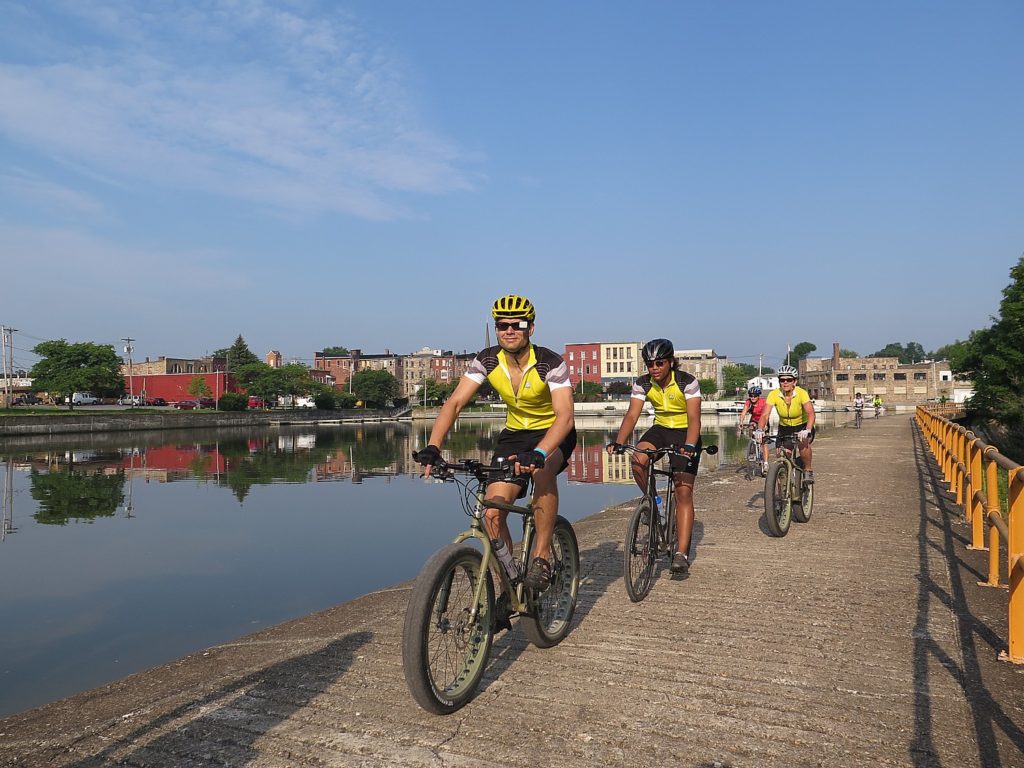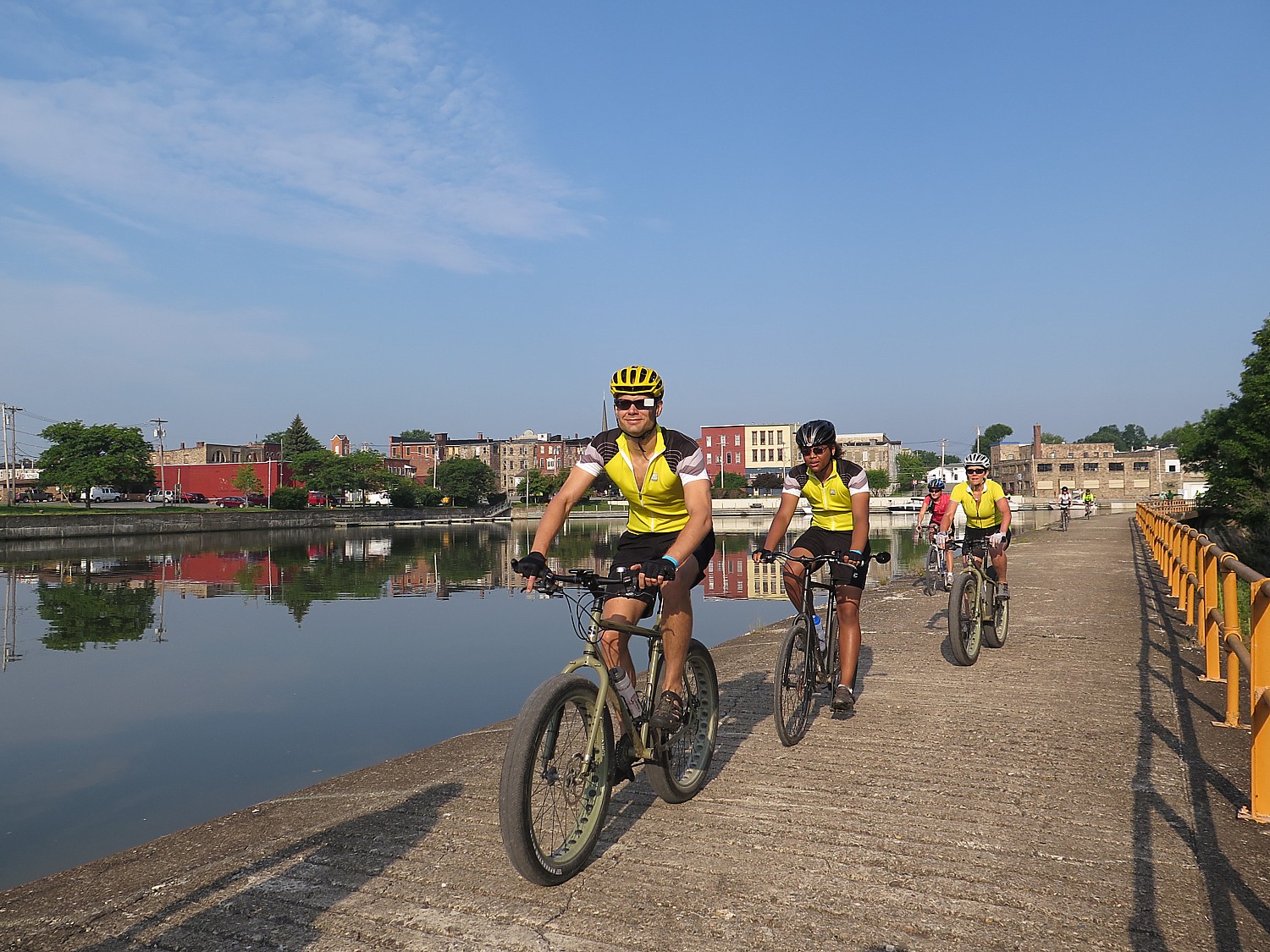
by Karen Rubin, Travel Features Syndicate, goingplacesfarandnear.com
This is huge for New York State’s tourism and recreational opportunities: Governor Andrew M. Cuomo’s is proposing a $300 million plan to reimagine the Erie Canal by creating recreational activities on the Canal to boost tourism and recreational fishing, mitigate flooding, enhance irrigation and restore wetlands.
“When the Erie Canal was created in the 19th century it set the state and the nation on a path to prosperity, and this year we will repurpose the canal to fit our state’s 21st century needs,” Governor Cuomo said. “This bold and visionary plan to transform this historic waterway will build on the success of the Empire State Trail (750 miles of connected bikeways), grow tourism across Upstate New York, improve resilience of today’s Canal communities and ensure the economic sustainability of the waterway into the future.”
“The canals have played a crucial role in New York’s history and growth, and with the implementation of these new exciting projects, the canals will remain a vital force and make a positive contribution to the economic well-being and quality of life in the 225 communities they travel through,” said Lieutenant Governor Kathy Hochul.
A first phase of funding starting this year – through the New York Power Authority Board which oversees the Canal Corporation as a subsidiary – includes a $100 million economic development fund to invest in communities along the Canal and a separate $65 million investment in solutions that will help prevent ice jams and related flooding in the Schenectady area.
The remaining $135 million of the plan’s funding will subsequently be allocated to research recommended by the Reimagine Task Force, as well as to solutionsrelated to flood mitigation, invasive species prevention and ecosystem restoration.
New Economic Development Fund for Canal Communities
In the first phase of the program, a $100 million economic development fund will support projects that adaptively reuse canal infrastructure to enhance water recreation, tie the Canal’s new recreational improvements to the Governor’s Empire State Trail, celebrate historic canal structures, and develop unique canalside attractions and activities. Roughly $25 million of that will be allocated immediately to a set of initial projects:
Connecting Communities: The “Brockport Loop” project in Monroe County will connect SUNY College at Brockport to the Empire State Trailand the village of Brockport through the transformation of a canal guard-gate into a pedestrian bridge and overlook, with a supporting grant of $2 million from the Ralph Wilson Foundation.
Celebrating “Iconic Infrastructure”: Interactive, hydro-powered illumination of Canal “movable dams” – initially in Amsterdam and Canajoharie in the Mohawk River valley – will celebrate the Canal’s heritage and its history as an engineering marvel.
Expanding Water Recreation: A new whitewater destination, at the north end of Cayuga Lake near Seneca Falls, will rely on existing water control infrastructure to construct an active water sports course adjacent to the Montezuma National Wildlife Refuge, to increase eco-tourism and sport visitors to the region.
Adapting Industrial Property for New Uses: Winner of the Reimagine the Canals competition, a canalside pocket neighborhood, will be developed by Madison County in Central New York at a former industrial property in Canastota along the Old Erie Canal – demonstrating a new model for 21st century canalside living.
Developing Destination Accommodations: The historic Guy Park Manor, on the Mohawk River in Amsterdam, will be reborn as a hospitality destination and a pedestrian bridge constructed across the already-existing Canal lock will provide access to additional overnight accommodation along the Empire State Trail on the opposite side of the river.
World-Class Fishing and Restored Wetlands
To create world-class fishing in Western New York, the new plan recommends managing water releases from the Canal to enhance fish habitat, improve angling opportunities, and extend the fall fishing season in Lake Ontario tributaries. It also includes funding to expand public fishing access along key streams in Orleans, Monroe and Niagara Counties. In addition, it identifies a program to divert Canal water to restore and re-nourish wetlands in Central New York that were compromised a century ago by the Canal’s construction. This will allow areas in close proximity to the Montezuma National Wildlife Refuge, a migratory stopover for more than 1 million birds each year, to be significantly enhanced to further attract naturalists, locals, and visitors from throughout the region and beyond.
Ideas in this plan originated from the Reimagine the Canals Task Force recommendations, launched by Governor Cuomo in May of 2019 to pursue a comprehensive investigation of how the 195-year-old Erie Canal could be reimagined for the 21st century. The Reimagine the Canals Task Force Report was just released.
The Task Force engaged with municipal leaders, stakeholders, local business owners, scientists and other experts, along with community members, to identify opportunities and solutions that support a new vision for future investments in the waterway. Many of the ideas that the Task Force explored came from the completed Reimagine the Canals competition, held last year by the New York Power Authority and New York State Canal Corporation. SUNY’s Rockefeller Institute of Government, on behalf of the Task Force, conducted a series of outreach sessions during the summer in five canal communities – Lockport, Brockport, Schenectady, Utica and Syracuse – to solicit new ideas from the public at large. Ideas were also solicited on a Reimagine the Canals website, offering more distant canal users an opportunity to provide their views to the Task Force.
The “Reimagine” initiative builds on successful efforts by Governor Cuomo to invest in the canal corridor, including the state’s Downtown Revitalization Initiative and successful Taste NY program, which have stoked new industries, businesses and housing in canal communities. Harnessing the Canal’s full potential to attract more tourism and recreation is a key focus of the Initiative. Governor Cuomo and state agency and authority staff will collaborate with Empire Line communities and continue to consult with Task Force members and other stakeholders to ensure the success of projects as they move forward.
There are 1.6 million trips taken annually on the Erie Canal Trailway, the former towpath used by mules and horses to pull barges in the canals’ early days. The Trailway is part of Governor Cuomo’s Empire State Trail, which at 750 miles will be the largest state multi-use trail network when completed in late 2020. Governor DeWitt Clinton began work on the original Erie Canal on July 4, 1817.
In addition to investing $300 million in the Canal System, there are also plans to create two new state parks in the Hudson Valley, add 4,000 acres of land to parks and introduce a $3 billion “Restore Mother Nature” bond act.
Meanwhile, registration has opened for the 22nd Annual Cycle the Erie, eight-day 400-mile, fully supported biking/camping trip, from Buffalo to Albany, operated by Parks & Trails NY, taking place July 12-19, 2020. For information on Cycle the Erie Canal, call Parks & Trails New York, 518-434-1583, email eriecanaltour@ptny.org or visit www.ptny.org/cycle-the-erie-canal.
(See our series on Cycle the Erie, at goingplacesfarandnear.com)
For more travel features, visit:
goingplacesnearandfar.wordpress.com
www.huffingtonpost.com/author/karen-rubin
travelwritersmagazine.com/TravelFeaturesSyndicate/
goingplacesfarandnear.tumblr.com/
instagram.com/going_places_far_and_near/
‘Like’ us on facebook.com/NewsPhotoFeatures
Twitter: @TravelFeatures
